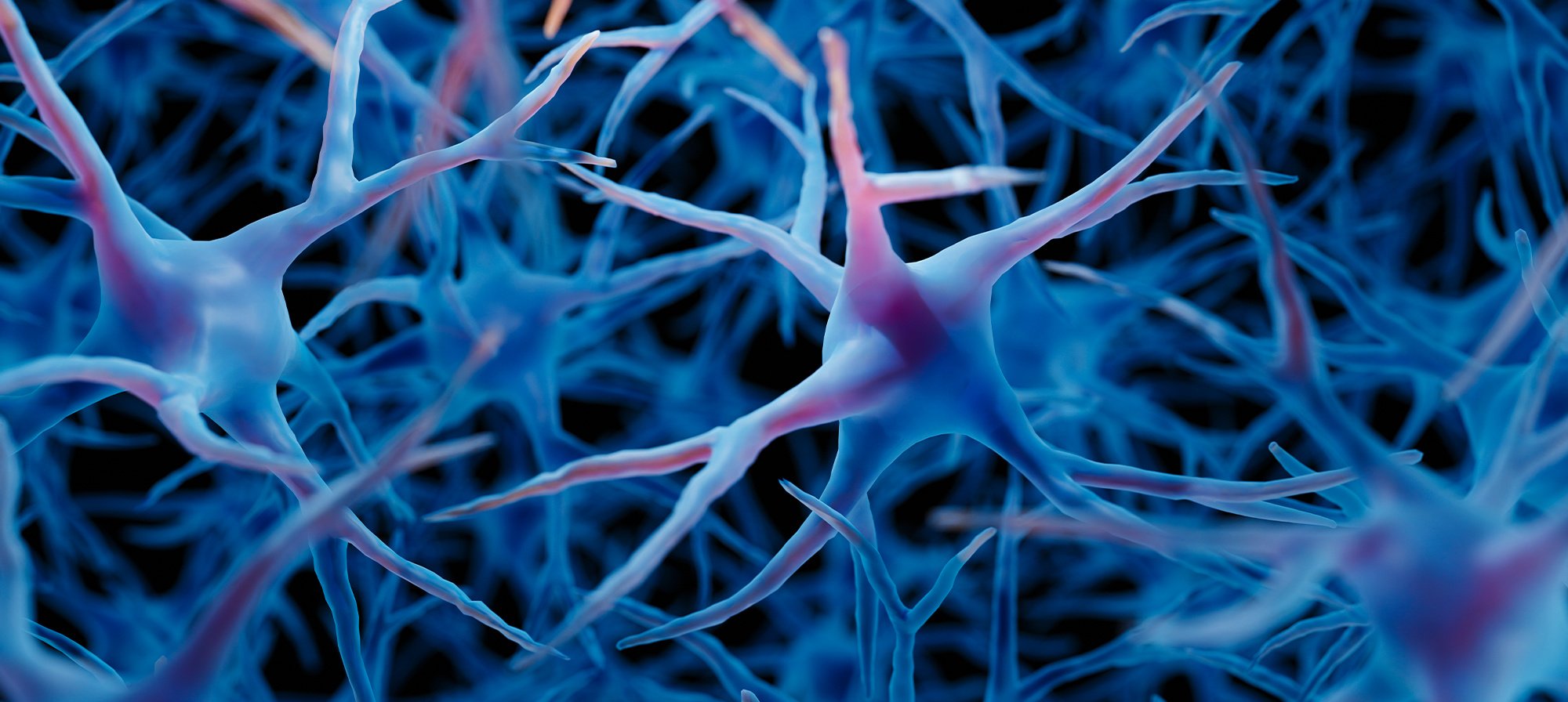Just when you thought your brain couldn’t become any more powerful, neuroplasticity enters the picture and changes everything—literally. While the term sounds a bit daunting, neuroplasticity simply refers to your brain’s power to change. Experts once believed that the adult brain couldn’t change. But research now tells us that our brains can, and do, transform in many ways throughout our lives.
It’s important to take steps throughout life to stave off cognitive decline and protect your brain health as you age. But making use of your brain’s neuroplasticity goes a step further. It can help improve your cognitive function and make your brain more resilient.
 A more detailed look at neuroplasticity
A more detailed look at neuroplasticity
Neuroplasticity is your brain’s ability to form new neural pathways when you learn or experience new things. Think of neural pathways like the brain’s highways. They are made up of neurons (brain cells that send information) connected by synapses (connections between those brain cells).
Thanks to neuroplasticity, the strength, number of synapses, and where they occur in your brain can change. This allows new neural pathways to form and existing ones to adapt. The result can benefit the mind and body.
But neuroplasticity can also result in negative changes. Chronic pain is one example. Continued input into the nervous system and brain creates an inaccurate perception of our pain experience. Put simply, we learn pain well—sometimes too well. Pain pathways in the brain can sometimes remain, even when the injury that initially caused the pain has healed. However, on a positive note, neuroplasticity can weaken these old pain pathways. This in turn allows for a more accurate perception of your pain.
Neuroplasticity impacts how the brain functions, meaning it can change your ability to:
- Learn
- Remember
- Manage emotions
- Perceive sensations
- Move your body in safe ways
Neuroplasticity’s biggest role is structural and mainly has to do with changing the strength of neural connections. Stronger neural connections allow you to learn faster and remember things better. They make it easier to perform tasks, improve skills, and adapt to new situations. Overall, they help your brain work more efficiently and effectively. Your brain also removes or weakens connections that no longer serve you.
These structural alterations in turn result in functional changes. For example, structural changes could improve your ability to play a sport or how you respond to stress. Or, if a person has experienced a brain injury, new structural changes allow an area of the brain to function differently to compensate for the injured area. This is extremely helpful for individuals with traumatic brain injuries or stroke, as it means certain abilities may not be lost.

Benefits of neuroplasticity
Since neuroplasticity literally rewires your brain, that process can help you:
- Improve cognition. New connections allow the brain to store new information, enhancing memory and learning.
- Delay age-related cognitive decline. Activities that promote neuroplasticity can help slow down or prevent declines such as memory loss and slowed reaction times.
- Change unwanted habits. Just as you can wire your brain to crave certain harmful habits, you can also rewire it to change for the better. Redirecting your thoughts and actions leads to changes in neural pathways, allowing new, healthier habits to form.
- Change how you respond to chronic pain or stress. By learning new ways to view pain and stress, neuroplasticity rewires those connections that create unhelpful thoughts to ones that influence your mind and body more positively.
- Heal from brain injuries. Neuroplasticity helps the brain work around injured areas by using other neural pathways or creating new ones. This is important for healing after strokes or traumatic brain injuries.
- Adapt to new situations. Thanks to its flexibility, your brain can adjust to new environments and challenges.
- Learn or improve at sports or fitness activities. Practice makes perfect and this is neuroplasticity in real time. As your brain learns new movements through repetition, these movements become more automatic and require less brain engagement for you to perform them well. This allows your brain to focus elsewhere around you to help you stay safe and be more successful in your activity.

How to promote neuroplasticity
Neuroplasticity declines with normal aging. Other factors outside our control may also help or hinder it. These include genetics, trauma, brain injury, and hormones. Other factors, such as your social interactions and experiences, can also play a role.
This doesn’t mean your brain health has to take a hit. While younger brains have more plasticity and learn passively, adult brains still have the power to change and form new connections. It just requires a bit more focus and practice. Here are some tips for supporting neuroplasticity and “rewiring” your brain at any time in your life:
- Stay focused on the cognitive changes you want to make. The first step when setting any goal is to take note of what needs to change, and how and why you want it to change. It’s important to remind your brain of the path you want it to take. Start by writing down your intentions and why you have them.
Do you want to keep your memory sharp? Are you learning a new language so you can travel to another country? If you need some motivation, just know that every challenge will help strengthen your neural pathways and build new ones! - Seek variety. Stimulating your brain through a range of activities can boost different brain functions. This means you can promote neuroplasticity by mixing things up. For example, memory games help with recall, while other kinds of games may boost thinking and learning.
Word puzzles are also a great way to challenge your brain. Try different types, such as crosswords, word searches, and logic puzzles. Mixing up these options can be entertaining and also help engage different parts of your brain. This makes for a well-rounded mental workout. - Learn a new skill. Learning a new skill or hobby helps your brain create new neural pathways and is a fun way to expand and engage with your world. And it’s never too late to learn new skills.
Is there a language you want to learn? Or is there a hobby that piques your interest? Pursue it! Give your friends’ neural pathways a boost, too, by inviting them to join you in an art, music, or dance class. Plus, here’s a great bonus—social connection also helps with neuroplasticity.
Keep in mind that your brain learns best from repetition. But it’s also key to pay close attention to the skill, habit, or topic you’re trying to learn. Practice and focus are best for strengthening and making new neural pathways! - Use all your senses. To further enhance your neuroplasticity, use all your senses to stimulate more areas of the brain. Each sense activates a different part of the brain to create a richer experience. This, in turn, creates more detailed memories and stronger connections.
For example, learning a new language by listening, speaking, reading, and writing it can reinforce neural pathways more effectively. - Practice mindfulness. Another way to use all 5 senses to promote neuroplasticity is by being mindful. In a nutshell, mindfulness is the practice of focusing on, and being present in, the moment. Practicing mindfulness over the long-term has been shown to increase grey matter, which is home to your neurons and synapses.
- Get moving. Many studies have shown a strong link between exercise, better brain health, and a lower risk of dementia. Working out does this in part by boosting neuroplasticity. It also increases levels of a protein that protects and helps new neural pathways grow, especially for those over 65.
Engaging in sports or fitness activities that require coordination boosts neuroplasticity. As you repeat new activities, your brain makes new connections so that the movements become more automatic. This means your brain is freed up to focus more on what is around you to stay safe and on other aspects of the game.
Research also suggests that staying active and fit supports memory recall, which has a lot to do with neuroplasticity. Exercise also increases circulation, which boosts blood flow to the brain. This blood carries oxygen and nutrients to the brain and helps clear away waste. - Eat a nutrient-dense diet. Healthy eating is linked to a healthy brain and the slowing of cognitive decline. You can help support neuroplasticity by feeding your brain plenty of omega-3 fatty acids and antioxidants. Both of these help build and repair brain cells and lower inflammation. Plus, some foods can boost levels of a key brain protein that sparks the birth of new brain cells and synapses.
The best brain foods have antioxidants and healthy fats. To make sure you’re getting these nutrients and others, give the MIND diet a try. MIND stands for Mediterranean-DASH Intervention for Neurodegenerative Delay. It focuses on foods that have been shown to support brain health. A balanced diet makes for a balanced brain. Just make sure to check with your doctor first before changing your diet in any way. - Prioritize sleep. Studies have shown that the glymphatic system is most active during sleep. This system helps get rid of waste that can cause brain inflammation and harm neurons. During sleep, your brain prunes weaker connections so it can focus on stronger ones and stay efficient. The brain also strengthens memories and new connections made while you were awake.

Neuroplasticity and healing brain injury
Your brain’s ability to recover is due in large part to neuroplasticity. It’s the foundation for the brain’s overall health and its recovery process. It helps the brain reorganize and form new neural connections after a stroke or traumatic brain injury (TBI) .
This is where functional neuroplasticity comes in. When brain injury occurs, unaffected neurons can adapt and take over for the injured parts of the brain. The healthy brain cells do this by forming new pathways.
Also, the brain becomes more plastic in the first few months after a stroke or other brain injury. This is the time when people can make the most progress towards healing.
Through therapies and rehab, neuroplasticity can be harnessed to support recovery and restore the brain’s abilities. Healing can take time, and restoring the brain’s pathways is hard work. It can take thousands of repetitions of rehab exercises. So be patient with the process, whether it’s yourself or a loved one who is healing from a stroke or traumatic brain injury.

Daily steps to support neuroplasticity
You don’t have to master a musical instrument or travel the world to encourage neuroplasticity. Small steps can create the environment your brain needs to form new brain cells and new connections. Bring new experiences into your daily life with these activities:
- Listen to a new song or create a “neuroplasticity” playlist with music you don’t normally listen to.
- Try a new recipe with foods you haven’t tried. For an extra brain boost, add some foods with omega-3 fatty acids such as fish or nuts.
- Read a non-fiction book or research a topic that interests you.
- Mix up your exercise routine. If you usually lift weights, try yoga, or a new sport like pickleball. Or go on a hike with friends.
- Go to a different grocery store than your usual.
- Listen to an engaging podcast or watch a documentary.
- Journal about your day and how you’re feeling.
- Challenge your brain by using your non-dominant hand for some of your daily tasks.
- Play games with your friends or family.
- Take a different route the next time you go for a walk.
- Meditate for just 5 minutes each day.
While there is still much to learn about the brain, we know that it is quite powerful. Understanding neuroplasticity can help you learn new skills, form healthy habits, and protect and boost your brain health for years to come.
Not a Silver&Fit® member? Learn more about everything the program has to offer, including more helpful healthy living tips like this, here on our website.
This information is not intended to take the place of regular medical care or advice. Please check with your doctor before using this information or beginning any self-care program. Images used for this article do not depict any members of the Silver&Fit program.
References
Alia, C., Spalletti, C., Lai, S., Panarese, A., Lamola, G., Bertolucci, F., Vallone, F., Di Garbo, A., Chisari, C., Micera, S., & Caleo, M. (2017). Neuroplastic changes following brain ischemia and their contribution to stroke recovery: Novel approaches in neurorehabilitation. Frontiers in Cellular Neuroscience, 11(76). https://doi.org/10.3389/fncel.2017.00076
Cleveland Clinic. (2023, March 19). Grey matter. https://my.clevelandclinic.org/health/body/24831-grey-matter
Cleveland Clinic. (2023, December 12). What is neuroplasticity? How it works. https://health.clevelandclinic.org/neuroplasticity
Fuchs, E., & Flügge, G. (2014). Adult neuroplasticity: More than 40 years of research. Neural Plasticity, 541870. https://doi.org/10.1155/2014/541870
Harvard Health Publishing. (2020, March 30). 7 ways to keep your memory sharp at any age. https://www.health.harvard.edu/healthbeat/7-ways-to-keep-your-memory-sharp-at-any-age
Hochberg, Z. (2011). Developmental plasticity in child growth and maturation. Frontiers in Endocrinology, 2(41). https://doi.org/10.3389/fendo.2011.00041
Kays, J. L., Hurley, R. A., & Taber, K. H. (2012). The dynamic brain: Neuroplasticity and mental health. The Journal of Neuropsychiatry and Clinical Neurosciences, 24(2), 118–124. https://doi.org/10.1176/appi.neuropsych.12050109
Lardone, A., Liparoti, M., Sorrentino, P., Rucco, R., Jacini, F., Polverino, A., Minino, R., Pesoli, M., Baselice, F., Sorriso, A., Ferraioli, G., Sorrentino, G., & Mandolesi, L. (2018). Mindfulness meditation is related to long-lasting changes in hippocampal functional topology during resting state: A magnetoencephalography study. Neural Plasticity, 2018, 5340717
Mannino, E. (2022, May 31). How to rewire your brain. Center for Healthy Aging. https://www.research.colostate.edu/healthyagingcenter/2022/05/31/how-to-rewire-your-brain/
Park, D. C., & Bischof, G. N. (2013). The aging mind: Neuroplasticity in response to cognitive training. Dialogues in Clinical Neuroscience, 15(1), 109–119. https://www.ncbi.nlm.nih.gov/pmc/articles/PMC3622463/
Puderbaugh, M., & Emmady, P. D. (2023, May 1). Neuroplasticity. National Library of Medicine; StatPearls Publishing. https://www.ncbi.nlm.nih.gov/books/NBK557811/
Rauchman, B. (2023, March 28). Neuroplasticity and healthy aging: What you need to know. Pacific Neuroscience Institute. https://www.pacificneuroscienceinstitute.org/blog/brain-health/neuroplasticity-and-healthy-aging-what-you-need-to-know/
Wright, K. P., Hull, J. T., & Czeisler, C. A. (2002). Relationship between alertness, performance, and body temperature in humans. American Journal of Physiology. Regulatory, Integrative and Comparative Physiology, 283(6), R1370-7. https://doi.org/10.1152/ajpregu.00205.2002
Youngblood Gregory, S. (2024, April 12). The power of neuroplasticity: How your brain adapts and grows as you age. Mayo Clinic Press. https://mcpress.mayoclinic.org/healthy-aging/the-power-of-neuroplasticity-how-your-brain-adapts-and-grows-as-you-age/
YouRong Sophie Su, Anand Veeravagu, & Grant, G. (2016). Neuroplasticity after traumatic brain injury. Nih.gov; CRC Press/Taylor and Francis Group. https://www.ncbi.nlm.nih.gov/books/NBK326735/
This article was written by Celina Johnson, edited by Gail Olson, and clinically reviewed by Ken Pelletier, PhD, MD(hc), on September 13, 2024, and Jaynie Bjornaraa, PhD, MPH, PT, SCS, LAT, ATC, CSCS, CSPS, on October 9, 2024.





